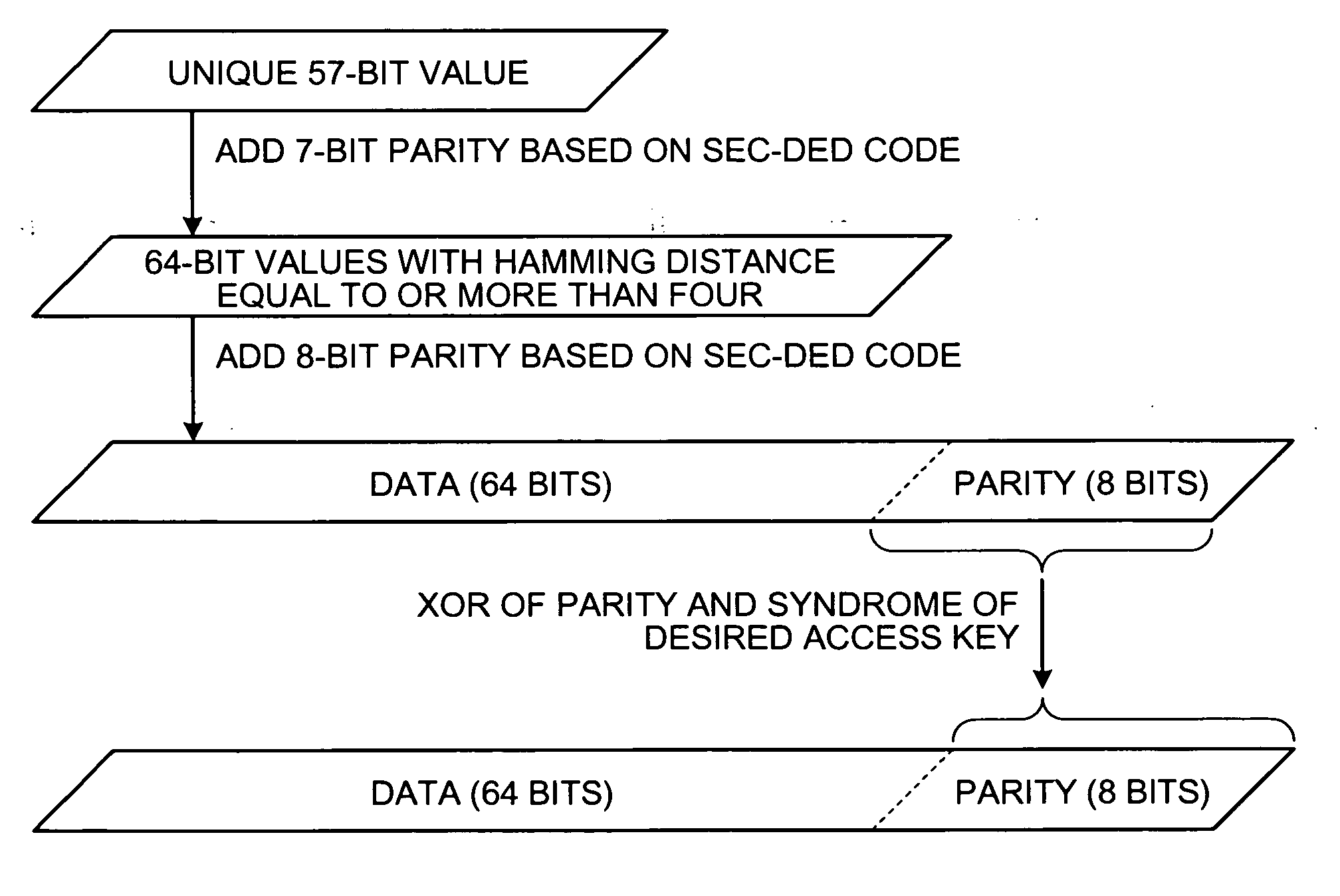Method, apparatus, and system for protecting memory
a technology for protecting memory and memory, applied in the field of technology for protecting memory, can solve the problems of data in the memory used by a certain process being accessed or overwritten by another process, damage, and some memory area that remains unused
- Summary
- Abstract
- Description
- Claims
- Application Information
AI Technical Summary
Problems solved by technology
Method used
Image
Examples
first embodiment
[0034] As shown in FIG. 1, a memory protecting apparatus 1 according to the present invention includes a protection processing unit 10, a processor 20, a memory controller 30, and a memory 40. The memory controller 30 and the processor 20 are connected via a processor bus 21. The protection processing unit 10 is an independent device installed between the memory controller 30 and the memory 40. More specifically, the protection processing unit 10 can be an independent large scale integration (LSI) chip.
[0035] The memory 40 includes an error correcting code, namely an error control code (ECC). The ECC is explained herein referring to FIGS. 2 and 3. The ECC has been widely used as a method of improving reliability of memories.
[0036] In general, as shown in FIG. 2, an n-bit data D to be read from or written to the memory at a time is added with an m-bit parity. The parity is calculated from the value of the data D. A data D′ with the size of n+m bits is written to the memory.
[0037] A...
second embodiment
[0072] As the present invention, the protection processing unit 10 in the memory protecting apparatus 1 can be an intellectual property (IP) to be installed into any type of system LSI instead of the independent LSI chip.
[0073] The memory protecting apparatus 1 according to the second embodiment is otherwise configured similarly to the memory protecting apparatus 1 according to the first embodiment.
third embodiment
[0074] As shown in FIG. 8, a memory protecting apparatus 800 according to the present invention includes a system LSI 11 and the memory 40. The system LSI 11 includes the protection processing unit 10, the processor 20, and the memory controller 30.
[0075] The memory controller 30 converts protocols between the processor bus 21 and the memory 40. The protection processing unit 10 is embedded to connect the memory controller 30 and the memory 40. The protection processing unit 10 can be embedded as an additive function to the memory controller 30.
[0076] The memory protecting apparatus 800 is otherwise configured similarly to the memory protecting apparatus 1 according to the first embodiment.
PUM
 Login to View More
Login to View More Abstract
Description
Claims
Application Information
 Login to View More
Login to View More - R&D
- Intellectual Property
- Life Sciences
- Materials
- Tech Scout
- Unparalleled Data Quality
- Higher Quality Content
- 60% Fewer Hallucinations
Browse by: Latest US Patents, China's latest patents, Technical Efficacy Thesaurus, Application Domain, Technology Topic, Popular Technical Reports.
© 2025 PatSnap. All rights reserved.Legal|Privacy policy|Modern Slavery Act Transparency Statement|Sitemap|About US| Contact US: help@patsnap.com



